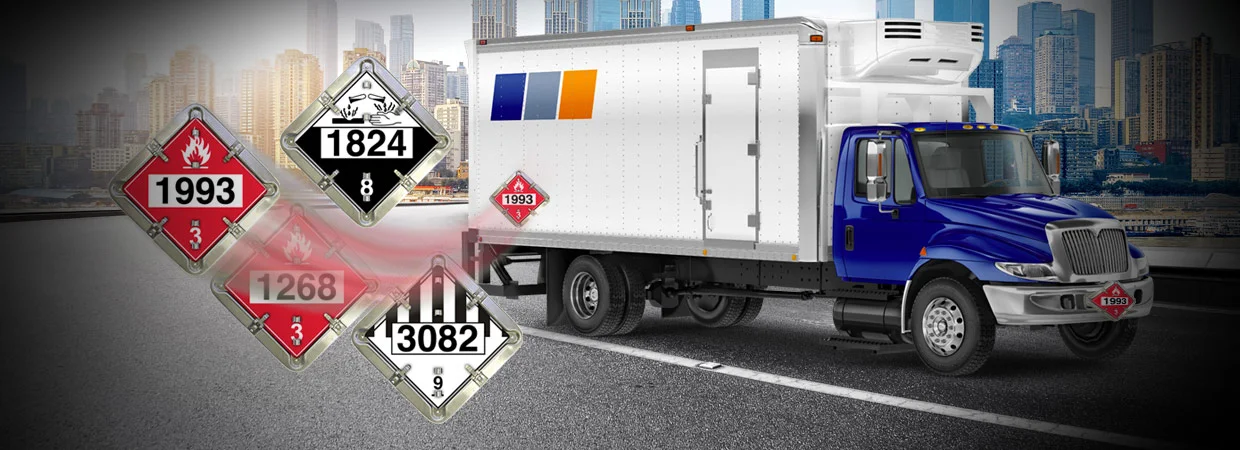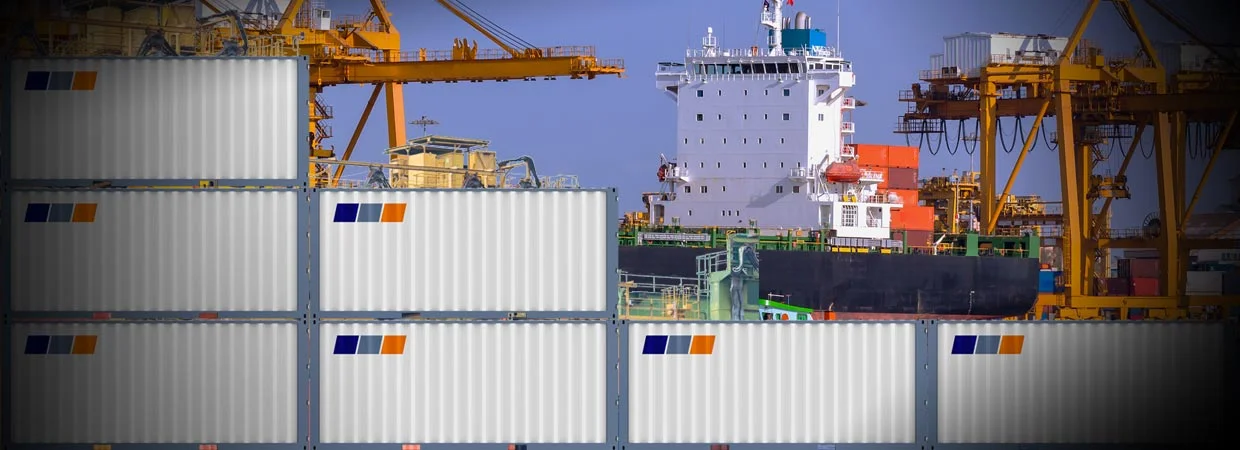TDG Training for Safe Hazardous Materials Handling
NEW!
The Regulations Amending the Transportation of Dangerous Goods Regulations TDG (Site Registration Requirements) were published in Part II of the Canada Gazette on October 25, 2023. You may also recognize this as the Client Information Database or CID amendment. It is accessible through the following URL:SOR/2023-206. These amendments came into force on the day on which they were published in the Canada Gazette, Part II.
Client Identification Database (CID)
These regulatory changes introduce new requirements to the Transportation of Dangerous Goods Regulations TDG that:
- require that persons who import, offer for transport, handle or transport dangerous goods at a site located in Canada, that they own or operate, to be registered in the Client Identification Database (CID); and
- require that all registered persons provide administrative information and information concerning the dangerous goods and operations being conducted at their respective Site/s located in Canada that they own or operate.
Those that are required to register in the database will have up to one (1) year after the coming into force date to complete their registration, i.e., until October 25, 2024. For more information regarding the registration database and the registration process, you can visit the https://tc.canada.ca/en/dangerous-goods/client-identification-database-cid.
Transportation of dangerous goods training TDG, IMDG, IATA, IATA, Transborder CFR 49
Do you receive and/or handle dangerous products?
Do you have to send dangerous goods in transport?
In all these situations, all employees must have a valid certificate.
We offer training for the transportation of dangerous goods by land (TDG), marine (IMDG) and air (IATA) as well as cross-border (CFR 49). All our training comply with Transport Canada requirements.
These trainings are suitable for any person handling, packaging and storing in accordance with the Transportation of Dangerous Goods (TDG) regulations
TDG certificate valid
At the end of each TDG training, you will leave with your compliant certificate.
TDG training for Handler
This TDG training is suitable for any person handling, packaging and storing in accordance with the Transportation of Dangerous Goods (TDG) regulations.
We privilege enjoyable learning with the help of games and didactic material. Each participant will receive a training booklet for future reference and a training certificate in accordance with Transport Canada standards. TDG training Handler outline |
 |
 |
TDG Training for Shipper
This TDG training aims to make the shipper autonomous in order to prepare the dangerous goods in accordance with the Transport of Dangerous Goods (TDG) regulations.
We privilege enjoyable learning with the help of games and didactic material. Each participant will receive a training booklet for future reference and a training certificate in accordance with Transport Canada standards. TDG Training for Shipper outline |
TDG Training - Cross-Border (49 CFR)
This TDG training aims to understand the difference between Transport of Dangerous Goods (TDG) regulations and 49 CFR. We teach the shipper to be autonomous in preparing all his shipments between Canada and the US by road.
We privilege enjoyable learning with the help of games and didactic material. Each participant will receive a training booklet for future reference and a training certificate in accordance with Transport Canada standards. Cross-Border (49 CFR) Training outline |
 |
 |
IMDG Training for Handler (Refresher)Prerequisite: TDG Handler training This TDG training is suitable for any person handling, packaging and storing in accordance with the regulations on the transport of dangerous goods by sea as per the International Maritime Dangerous Goods Code (IMDG Code).
We privilege enjoyable learning with the help of games and didactic material. Each participant will receive a training booklet for future reference and a training certificate in accordance with Transport Canada standards. IMDG Handler (Refresher) Training outline |
IMDG Training for Shipper (Initial)Prerequisite: TDG Shipper training This TDG training aims to make the shipper autonomous to prepare the dangerous goods in accordance with the regulations on the transport of dangerous goods by sea as per the International Maritime Dangerous Goods Code (IMDG code).
We privilege enjoyable learning with the help of games and didactic material. Each participant will receive a training booklet for future reference and a training certificate in accordance with Transport Canada standards. IMDG Shipper (Initial) Training outline |
 |
 |
IATA Training - InitialPrerequisite: TDG Shipper training This TDG training aims to make the shipper autonomous in order to prepare the dangerous goods in accordance with the regulations on the transport of dangerous goods by air along with the International Civil Aviation Organization (ICAO) and the International Air Transport Association (IATA).
We privilege enjoyable learning with the help of games and didactic material. Each participant will receive a training booklet for future reference and a training certificate in accordance with Transport Canada standards. IATA Initial Training outline |
IATA Refresher TrainingPrerequisite: IATA Initial training This TDG training aims to update your knowledge of dangerous goods shipping by air in collaboration with the International Civil Aviation Organization (ICAO) and the International Air Transport Association (IATA).
We privilege enjoyable learning with the help of games and didactic material. Each participant will receive a training booklet for future reference and a training certificate in accordance with Transport Canada standards. IATA Refresher Training outline |
|
Dangerous Goods Transportation Hazard Classes
Part 2 of the Transportation of Dangerous Goods Regulations defines the different hazard classes and the classification criteria for each. Here is a brief summary of each class.
Class 1: Explosives ![Explosive pictogram]()
A substance is considered an explosive under TDG if it falls into one of the following two definitions:
- It is a substance that, through chemical reaction, generates gases at a pressure, temperature and speed sufficient to cause damage to the surrounding area
- It is a substance that has been designed to produce an explosive or pyrotechnic result. These substances have been designed to produce heat, light, smoke, gas or sound, by means of a self-sustaining exothermic chemical reaction, without detonation.
Examples of explosives include dynamite, fireworks and smoke signals.
Class 2: Gases
The gases class includes gases, their mixtures, objects charged with a gas and aerosols. There are 3 divisions in Class 2:
Class 2.1: Flammable gases![Flammable gases pictogram]()
These are products that are gaseous at room temperature and pressure and are flammable. A gas is considered flammable if it meets one of the following two conditions:
- Its lower flammability limit is 13% or less
- The difference between its upper flammability limit and its lower flammability limit is at least 12 percentage points
Common examples of flammable gases are propane and natural gas.
Class 2.2: Non-flammable, non-toxic gases
Non-flammable, non-toxic
These are products that are transported under pressure, at least 280 kPa at 20°C, or that are refrigerated liquids. In both cases, products must not fall into class 2.1 or class 2.3 to be classified as a class 2.2 product.
Common examples of non-flammable, non-toxic gases are nitrogen and argon.
Oxidizing gas![Oxidizing gas pictogram]()
Class 2.2 may also use another pictogram, if the gas being transported is an oxidizing gas. In this case, the yellow label with the oxidizing symbol must be used instead of the green label of class 2.2.
Oxygen is a typical example of an oxidizing gas.
Class 2.3: Toxic Gases![Toxic Gases pictogram]()
Class 2.3 includes gases that meet one of the following two definitions:
- The gas is known to be toxic or corrosive to humans
- The gas has an LC50 of less than or equal to 5000 mL/m3
The LC50 is the 50% lethal concentration, i.e. the concentration of the product in the air which, when breathed over a period of 4 hours, causes the death of 50% of the group of animals studied.
Ammonia and carbon monoxide are examples of this class of gases.
Class 3: Flammable Liquids![Flammable Liquids pictogram]()
Flammable liquids are substances that are liquids at room temperature and have a flash point of 60°C or below. Also included in this class are liquids that have a flash point above 60°C but are transported at a temperature equal to or above their flash point. The flash point is the lowest temperature at which a substance generates enough vapors to form a mixture with air that can ignite. When a product is at a temperature equal to or above its flash point, a single spark or shock can be enough to cause ignition. Examples of flammable liquids include rubbing alcohol and gasoline.
Class 4: Flammable Solids, Substances Liable to Spontaneous Combustion, and Water-Reactive Substances
Like Class 2, Class 4 contains 3 divisions. Each of them has its own classification criteria.
Class 4.1: Flammable Solids![Flammable Solids pictogram]()
Class 4.1 includes substances that ignite easily, as well as those that are likely to cause a fire by friction. Examples include matches.
This class also includes desensitized explosives, if they no longer fulfill the requirements to be classified as explosives, and self-reactive substances.
Division 4.2: Substances Liable to Spontaneous Combustion![Substances Liable to Spontaneous Combustion pictogram]()
This class includes pyrophoric substances, i.e. substances that ignite spontaneously on contact with air in 5 minutes or less. Also included are self-heating substances that, in large quantities, ignite spontaneously on contact with air over a long period of time.
Examples that fall into this division include activated charcoal and powdered magnesium.
Division 4.3: Substances that, in contact with water, emit flammable gases (water-reactive substances)![Substances that, in contact with water, emit flammable gases (water-reactive substances) pictogram]()
Substances that are included in this class react with water to form flammable gases.
The most common examples are sodium and lithium, both in their metallic state.
Class 5: Oxidizing substances and organic peroxides
This class includes 2 divisions: class 5.1, oxidizing substances, and class 5.2, organic peroxides.
Division 5.1: Oxidizing substances![Oxidizing substances pictogram]()
Oxidizing substances are solid or liquid substances that release oxygen. They are therefore substances that can cause a fire, when brought into contact with combustible materials, or aggravate a fire.
Among oxidizing substances, we can think of hydrogen peroxide and chlorine tablets for swimming pools.
Class 5.2: Organic Peroxides![Organic Peroxides pictogram]()
Organic peroxides are carbon-based substances that have a peroxide function, or "R-O-O-R'", within their chemical structure. These substances can have several properties that make them very hazardous, such as:
- Being susceptible to self-accelerating exothermic decomposition
- Being susceptible to explosive decomposition
- Burning rapidly
- Being sensitive to shock or friction
- Reacting hazardously with other materials
- Causing serious eye damage.
Examples of common organic peroxides are difficult to find, as these substances are generally extremely specialized products. An example would be lauroyl peroxide, which can be used as a bleaching agent.
Class 6: Toxic and Infectious Substances
Class 6 substances are products that are likely to cause serious harm to the health of humans or animals exposed to them. It includes two divisions: class 6.1, which are toxic materials, and class 6.2, which are infectious materials.
Class 6.1: Toxic substances![Toxic substances pictogram]()
Class 6.1 includes toxic materials, i.e. materials that can cause death, serious injury, or harm human health if absorbed into the body. There are 3 distinct absorption routes in this class: ingestion, skin absorption, and inhalation. Inhalation is itself separated into different inhalation modes: inhalation of vapors is distinct from inhalation of dust and mists. Note that inhalation of gases is not considered in class 6.1, since toxic gases are defined in class 2.3.
For materials that are toxic by ingestion and skin contact, the classification criterion used is the LD50. The LD50, or 50% lethal dose, is the dose that, in a test on a group of animals, causes the death of half of the group. The lower the LD50, the more toxic the product is.
To be classified in class 6.1 due to its toxicity by ingestion, a product must have an oral LD50 of 300 mg/kg or less. To be classified in class 6.1 due to its toxicity by skin contact, it must have a skin LD50 less than or equal to 1000 mg/kg.
A product can be classified 6.1 for its toxicity by inhalation of dusts or mists if its LC50 for this mode of inhalation is less than or equal to 4 mg/L.
For the inhalation of vapors, the situation is more complex, because there are two criteria:
- The product must have a LC50 for inhalation of vapors of at most 5000 ppmV
- The product must have a concentration of vapors at saturation in air, at room temperature and pressure, of at least 20% of its LC50.
Examples of substances classified in 6.1 are sodium cyanide, mercury salts and several arsenic compounds.
Class 6.2: Infectious substances![Infectious substances pictogram]()
This class contains substances that are likely to infect humans or animals. Among the different substances included in this hazard class, we find:
- Microorganisms, such as viruses, bacteria or fungi
- Prions
- Toxins
- Biomedical waste
Class 7: Radioactive materials ![Radioactive materials]()
This product class includes materials that are defined in the regulations on the packaging and transport of nuclear substances.
Class 8: Corrosives![Corrosives pictogram]()
This hazard class includes substances that can destroy human skin and substances that can attack metals. This can include acidic substances, basic substances, as well as pH-neutral substances that also have corrosive properties.
It is very important to mention that corrosives are the only class in the TDGR within which products are not always compatible. Since this class includes acids and bases, special attention must be paid to this class to avoid incompatibilities during transport and storage.
To be classified as a corrosive material due to its action on human skin, a product must cause the destruction of intact skin tissue over its entire thickness, within an observation period of 14 days, after an application lasting no more than 4 hours.
To be classified as a corrosive material due to its action on metals, a product must exhibit a corrosion rate on steel or aluminum of at least 6.25 mm per year when tested at 55°C. Corrosive materials include hydrochloric acid, sodium hydroxide, and mercury.
Class 9: Miscellaneous products, materials or organisms![Miscellaneous products, materials or organisms pictogram]()
Products that fall into Class 9 are products that do not fall into any other class but may still present a hazard during transport.
Some products are directly mentioned in the regulation as being part of Class 9, such as First Aid Kits.
The regulation also states that materials are classified in Class 9 if they are:
- Lithium batteries or cells that meet certain conditions
- Marine pollutants
- Liquids transported at 100°C or more
- Solids transported at 240°C or more, without tar or binder
Frequently asked questions
What is TDG training?
TDG training is training on the transportation of dangerous goods. It must include training on the following topics, if they relate directly to the person duties:
- Classification
- Shipping names
- use of schedules 1, 2 and 3
- shipping documents
- safety marks
- means of containments
- emergency response assistance plans
- reporting requirements
- practices
- proper use of equipment
- reasonable emergency measures
More specific training is required for some ways of transportation, such as marine and air transportation.
How to get a TDG certificate?
A TDG certification has to be issued by the employer (RTDG, art. 6.3(1)). However, the employer must ensure the employee is adequately trained before issuing a TDG certificate. As most employers do not have internal experts to train their employees, training performed by an external expert firm is often required before issuing a certificate.
Make sure to select an external expert firm offering training with an instructor, to have access to someone who can answer your specific questions and needs.
Who requires TDG training in Canada?
Any person who handles, offers to transport or transports dangerous goods must either have received TDG training or perform those tasks under the direct supervision of somebody trained (RTDG, art. 6.1(1)). What is often overlooked, however, is that receiving a delivery of dangerous goods is part of handling. Employees receiving dangerous goods must thus be trained. Indeed, because labeling according to RTDG replaces the requirement to label according to WHMIS, employees handling products labeled for transportation must be trained to understand the hazards of the products handled.
Note the regulation also requires any site that imports, offers for transport, handles or transports dangerous goods to be registered in Transport Canada’s database (RTDG, art. 17.3(1)). This requirement has started on October 25th, 2024.

Design, programming and hosting by VisionW3.com

















